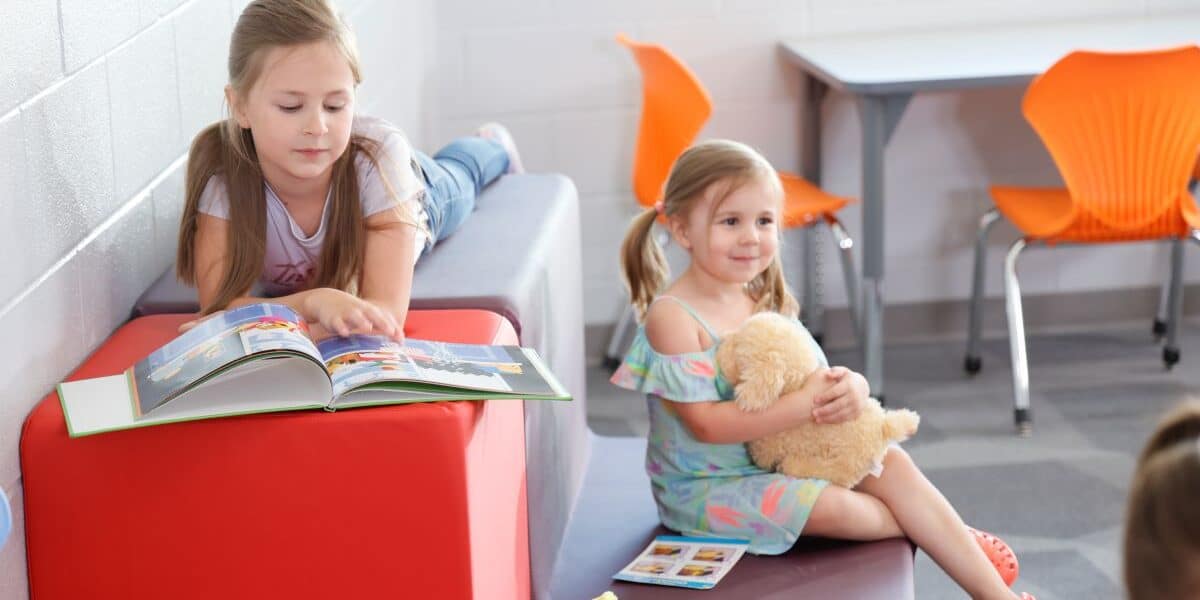In the realm of modern education, the concept of flexible seating is revolutionizing the way we perceive and design learning environments.
Moving beyond the conventional static rows of desks, the contemporary classroom is increasingly embracing a diverse amalgamation of soft seating, traditional desks, and innovative options like bean bags and floor cushions.
This article explores the multifaceted benefits of flexible seating, underscoring its pivotal role in enhancing learning, student engagement, and overall well-being in educational settings.
UNDERSTANDING FLEXIBLE SEATING
Flexible seating transcends the mere provision of varied furniture options. It embodies a comprehensive approach to shaping learning spaces that support students’ diverse learning preferences and requirements.
By offering choices ranging from the comforting embrace of bean bags to the structured support of traditional desks, flexible seating facilitates an adaptable and inclusive environment.
This paradigm shift from the one-size-fits-all seating arrangement marks a significant progression in our understanding of the interplay between physical space and educational outcomes.
THE POWER OF CHOICE
At the heart of flexible seating lies the empowering element of choice. By providing students the choice of selecting their seating and what is most comfortable or productive for them, there’s an implicit message of trust and respect for their individual preferences.
This empowerment goes beyond physical comfort, directly impacting student motivation and engagement. The decision-making involved in choosing a seat becomes an integral part of the educational process, nurturing critical thinking and personal responsibility in learners.
ENHANCING PHYSICAL HEALTH
The health implications of flexible seating are substantial. Traditional seating can often result in physical discomfort and long-term health concerns.
In contrast, flexible seating invites movement, allowing students to rock, bounce, or stand, thereby increasing blood flow and oxygen to the brain.
This dynamic engagement with the learning space not only promotes physical wellbeing but also correlates with enhanced academic performance and heightened concentration.
COMFORT AND CONCENTRATION
The impact of comfort on learning cannot be overstated. Flexible seating, especially soft seating, enables students to identify and settle in spaces where they feel most at ease, thus fostering better concentration and productivity.
By catering to individual comfort needs, this approach ensures a more effective and focused learning experience, ultimately enhancing academic outcomes.
FOSTERING COMMUNITY AND COLLABORATION
The transition from isolated, rigid desks to flexible seating catalyzes a stronger sense of community and collaboration in the classroom. This setup naturally facilitates group interactions and cooperative learning, mirroring the collaborative nature of contemporary workplaces.
Preparing students for future professional scenarios, flexible seating cultivates essential skills like teamwork, adaptability, and shared responsibility.
Flexible seating often includes the ability to easily change furniture arrangements to fit any collaborative need, whether it’s a group project, discussion, individual work time, study groups, etc.
PROMOTING INDEPENDENT LEARNING AND COMMUNICATION SKILLS
Flexible seating plays a pivotal role in transforming classroom dynamics from teacher-centric to student-focused. This shift not only promotes independent learning but also enhances communication between students and educators.
It fosters a learning environment where students take greater ownership of their educational journey, honing vital life skills such as problem-solving, emotional intelligence, and effective communication.
SUPPORTING SENSORY AND SPECIAL NEEDS
For students with special needs—such as those with ASD, ADHD, or other conditions that can lead to sensory overload or sensory-seeking behaviors—flexible seating offers significant advantages.
The array of seating choices provides necessary sensory stimulation, aiding these students in focusing better and engaging more effectively in their studies.
Seating options like floor rockers provide opportunities for fidgeting/movement for students who are unable to sit still at a traditional desk for long periods of time.
This thoughtful approach to classroom design acknowledges a range of learning styles and needs, thereby fostering an inclusive educational environment.
SHIFTING MINDSETS IN EDUCATION
Embracing flexible seating is indicative of a deeper shift in educational philosophy. This approach engenders a more interactive and engaging learning atmosphere, transferring the ownership of the classroom space from the teacher to the learners.
It promotes a growth mindset, recognizing that the educational journey is replete with both challenges and achievements.
ADAPTING TO DIVERSE LEARNING ENVIRONMENTS
Flexible seating is particularly relevant in diverse learning settings. By offering a variety of seating options, educators can effectively cater to a wide range of student needs across different age groups and learning styles.
This adaptability is key in creating an environment where each student can find their optimal learning space, enhancing the overall educational experience.
PREPARING FOR FUTURE CHALLENGES
In a rapidly changing world, the skills fostered by flexible seating—such as adaptability, problem-solving, and collaboration—are increasingly important.
By preparing students to face future challenges with resilience and flexibility, flexible seating plays a critical role in equipping them for success beyond the classroom.
The importance of flexible seating in educational settings extends far beyond mere aesthetics or trendy classroom designs.
It is a crucial component in the evolution of modern education, aligning with the dynamic needs of today’s learners and fostering a more effective, inclusive, and engaging learning atmosphere.
This information is courtesy of Marco, www.madebymarco.net. Family owned and operated for over a quarter century, Marco has a strong, values-driven culture focused on integrity and commitment to doing the right thing for their customers and their team. Their goal is to provide furniture solutions that foster an environment for creative learning, true collaboration, and maximum attentiveness. Made By Marco is your guarantee that each product has been designed and crafted with your success in mind.










